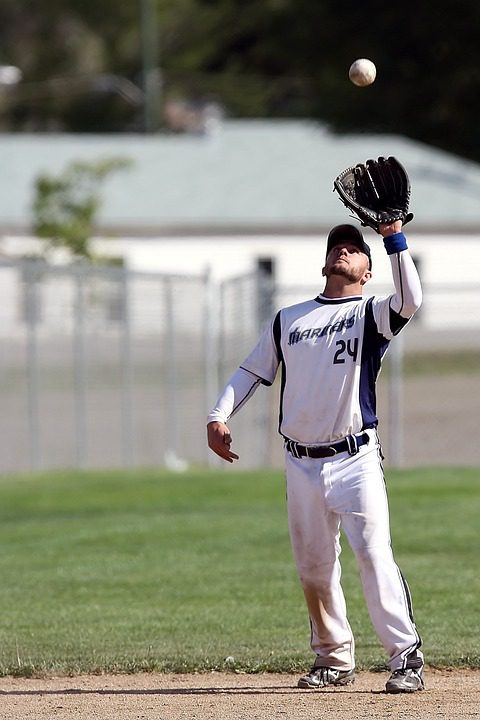Ever wondered how teams manage their pitchers so efficiently? The MVR (Mound Visits Remaining) rule has changed the way baseball is played, making each visit to the mound a crucial part of the game. Introduced to speed up the action and keep fans on the edge of their seats, this rule challenges coaches to be smarter and faster with their decisions. Understanding MVR not only deepens your appreciation of the game but also helps you follow the intense strategies used by your favorite teams. Ready to discover how this rule impacts every pitch and play? Let’s dive in and explore the exciting world of MVR in baseball!
What Does MVR Mean in Baseball?
MVR stands for “Mound Visits Remaining,” and it is a rule in baseball that tracks how many times a team can visit the pitcher on the mound during a game. A mound visit is when a coach, manager, or another player goes to the pitcher to talk about strategy, give advice, or check on the pitcher’s condition. The purpose of the MVR rule is to limit how many times this can happen in a game.
Before 2018, there were no strict limits on mound visits, and teams could stop the game to visit the pitcher as many times as they wanted. This sometimes made the game slower and less exciting. To speed up the game and keep it moving, Major League Baseball (MLB) introduced the MVR rule.
Now, each team is allowed only five mound visits per game, and this includes visits from coaches, managers, or even catchers talking to the pitcher. If a team uses up all their visits, they can’t visit the pitcher anymore, except for certain special situations like an injury or to replace the pitcher.
This rule has changed how teams manage their pitchers. Coaches need to think carefully about when to use their mound visits, especially in close games where every decision matters. The MVR rule makes the game more exciting because it forces teams to make quick, smart decisions and keeps the action going. It also adds a new layer of strategy to the game, which fans and players find interesting.
Understanding MVR helps you appreciate how baseball is evolving to be faster and more dynamic while still keeping the strategy and teamwork that make the game special.
The Evolution of the MVR Rule in Baseball

The MVR rule wasn’t always a part of baseball. Before 2018, teams could visit the pitcher as many times as they wanted during a game. This led to frequent pauses in play, slowing down the action and often frustrating fans who wanted to see a faster-paced game.
In 2018, Major League Baseball (MLB) decided to introduce the MVR (Mound Visits Remaining) rule to limit the number of mound visits a team could make. This was part of a larger effort to speed up the game and make it more enjoyable for everyone watching. Each team was given only five mound visits per game, and this includes visits from coaches, managers, or even catchers. The rule doesn’t apply to pitching changes or injury-related visits.
This change brought a new level of strategy to the game. Coaches and players now need to be more careful about when they visit the mound. If they use up all their visits too early, they risk being unable to communicate directly with the pitcher during crucial moments later in the game. It also forces catchers and pitchers to be more prepared and in sync with each other, as they can’t rely on frequent visits to talk about their next move.
Fans have also responded to the MVR rule positively. The faster pace makes the game more exciting, and knowing that teams need to carefully manage their visits adds an extra layer of suspense. It keeps everyone on their toes and makes each decision more meaningful.
Overall, the MVR rule is a great example of how baseball continues to evolve. It keeps the essence of the game while making it more dynamic, exciting, and enjoyable for both players and fans. Understanding this evolution helps you appreciate the modern game and how strategy has adapted with these changes.
How MVR Impacts Game Strategy
The MVR rule has changed the way teams approach their game strategy. Limiting mound visits forces coaches and players to be more efficient and thoughtful about when to communicate with the pitcher. Every mound visit now carries more weight, and teams need to plan carefully to avoid running out of visits before the game is over.
Here are the key ways MVR impacts game strategy:
- Limiting the Number of Pitcher Visits: Coaches can no longer use unlimited mound visits to calm down pitchers or discuss strategy whenever they want. This means pitchers must be more prepared and focused throughout the game. Teams often use signals or pre-game discussions to ensure everyone is on the same page when mound visits are limited.
- Managing Pitcher Fatigue: One of the main reasons for mound visits is to check on a pitcher’s fatigue level. With the MVR rule, coaches need to keep a close eye on their pitchers and make quicker decisions about whether to leave them in the game or bring in a reliever. They can’t rely on constant visits to gauge how a pitcher is feeling.
- Bullpen Management: The MVR rule also affects how teams use their bullpen. Coaches need to think ahead about when they might need to bring in relief pitchers and how many mound visits they will need to make these changes smoothly. Having a clear bullpen strategy is now more important than ever.
Overall, MVR adds a new level of strategy to baseball. Teams need to be more organized and efficient in how they communicate and manage their players, which makes the game more challenging and exciting for everyone involved.
Read: What Does BB Mean in Baseball?
Key Considerations for Coaches Under the MVR Rule
With the introduction of the MVR rule, coaches need to adapt their approach to game management. Limiting mound visits means coaches must think strategically about when to visit the pitcher and how to make the most out of each visit. This change has added complexity but also opens up new opportunities for smarter gameplay.
Here are key considerations for coaches under the MVR rule:
- Using Mound Visits Wisely: Coaches now need to be selective about when to use mound visits. They often save them for critical moments in the game, like when the pitcher is struggling or when a key decision needs to be made. Timing is everything under the MVR rule.
- Improving Pitcher and Catcher Communication: Since coaches can’t visit the mound as frequently, it’s essential for pitchers and catchers to be on the same page. Teams often work on signals and game plans ahead of time to reduce the need for mound visits. Strong communication between the pitcher and catcher can help avoid misunderstandings and keep the game running smoothly.
- Reading Pitcher Fatigue: One of the biggest challenges under the MVR rule is managing pitcher fatigue without frequent visits to check on the pitcher’s condition. Coaches must learn to spot signs of fatigue from the dugout and be ready to act quickly when a pitcher starts to struggle. This requires keen observation and trust in the pitcher’s ability to communicate when they need help.
- Maximizing Bullpen Effectiveness: MVR also affects how coaches manage their bullpen. Coaches need to be prepared to bring in relief pitchers at the right time and use their limited mound visits to ensure smooth transitions. A well-organized bullpen strategy helps avoid unnecessary visits and keeps the game flowing.
The MVR rule challenges coaches to make faster, smarter decisions. It rewards teams that are well-prepared and have strong communication, adding an extra layer of excitement to the game.

